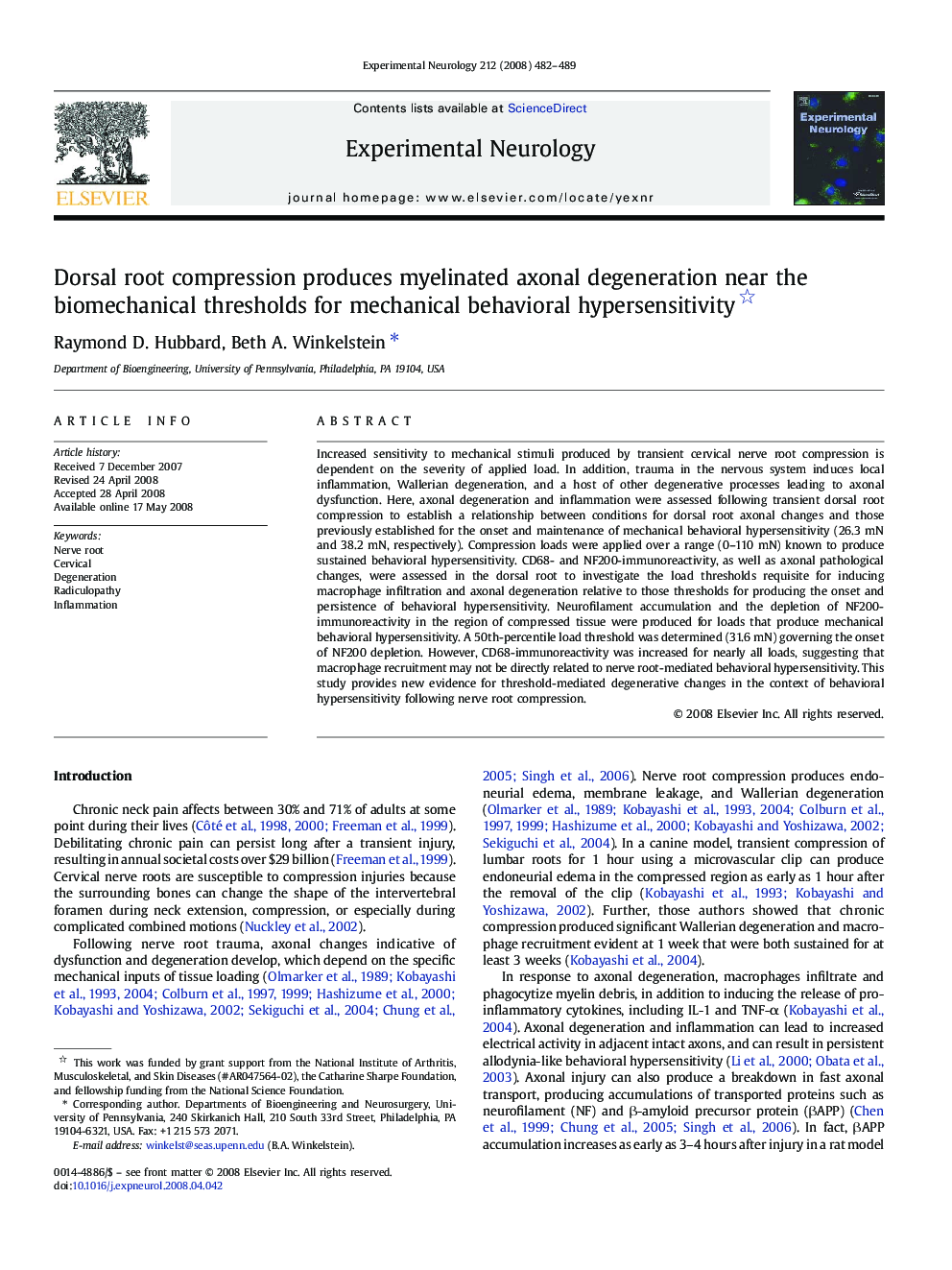| Article ID | Journal | Published Year | Pages | File Type |
|---|---|---|---|---|
| 3056574 | Experimental Neurology | 2008 | 8 Pages |
Increased sensitivity to mechanical stimuli produced by transient cervical nerve root compression is dependent on the severity of applied load. In addition, trauma in the nervous system induces local inflammation, Wallerian degeneration, and a host of other degenerative processes leading to axonal dysfunction. Here, axonal degeneration and inflammation were assessed following transient dorsal root compression to establish a relationship between conditions for dorsal root axonal changes and those previously established for the onset and maintenance of mechanical behavioral hypersensitivity (26.3 mN and 38.2 mN, respectively). Compression loads were applied over a range (0–110 mN) known to produce sustained behavioral hypersensitivity. CD68- and NF200-immunoreactivity, as well as axonal pathological changes, were assessed in the dorsal root to investigate the load thresholds requisite for inducing macrophage infiltration and axonal degeneration relative to those thresholds for producing the onset and persistence of behavioral hypersensitivity. Neurofilament accumulation and the depletion of NF200-immunoreactivity in the region of compressed tissue were produced for loads that produce mechanical behavioral hypersensitivity. A 50th-percentile load threshold was determined (31.6 mN) governing the onset of NF200 depletion. However, CD68-immunoreactivity was increased for nearly all loads, suggesting that macrophage recruitment may not be directly related to nerve root-mediated behavioral hypersensitivity. This study provides new evidence for threshold-mediated degenerative changes in the context of behavioral hypersensitivity following nerve root compression.
